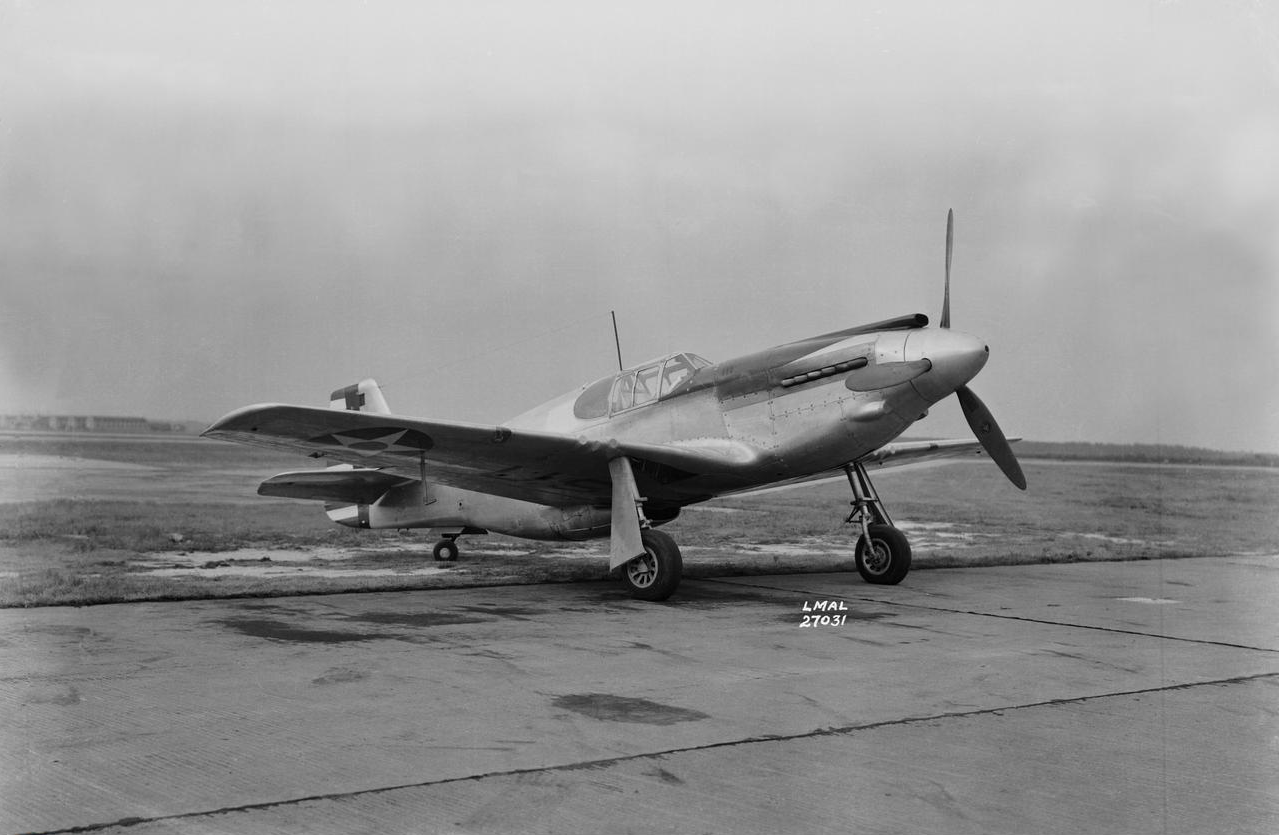
 29 December 1941: The first North American Aviation XP-51 fighter prototype, Air Corps serial number 41-038, arrived at the National Advisory Committee for Aeronautics Langley Memorial Aeronautical Laboratory, Langley Field, Hampton, Virginia, for flight testing. This airplane was the fourth production Royal Air Force Mustang Mk.I, North American serial number 73-3101.
29 December 1941: The first North American Aviation XP-51 fighter prototype, Air Corps serial number 41-038, arrived at the National Advisory Committee for Aeronautics Langley Memorial Aeronautical Laboratory, Langley Field, Hampton, Virginia, for flight testing. This airplane was the fourth production Royal Air Force Mustang Mk.I, North American serial number 73-3101.
The test program resulted in an improved aileron design which significantly improved the Mustang’s maneuverability. The new aileron was used on all production models.
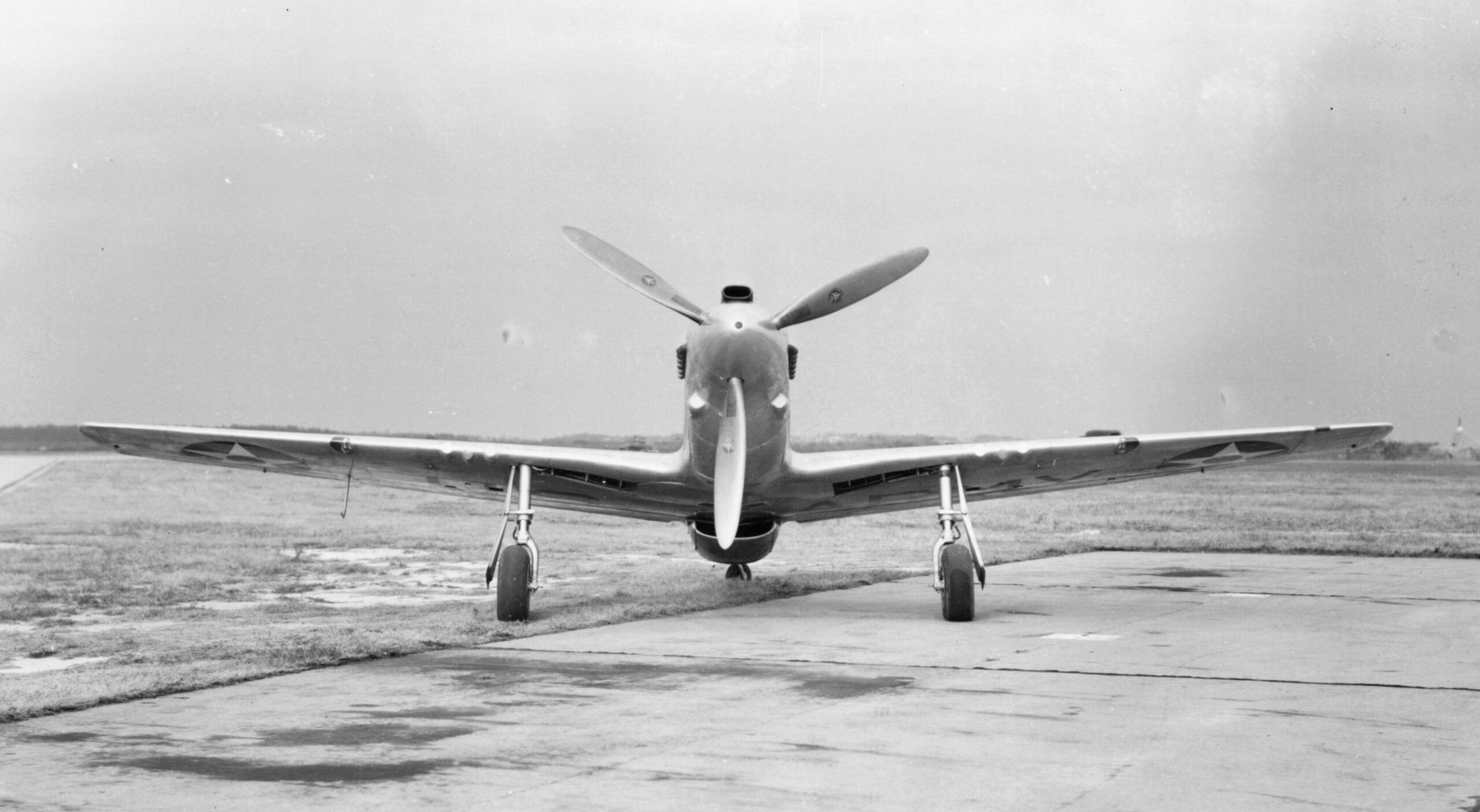
41-038 was returned to Wright Field on 2 November 1942. The second XP-51, 41-039, arrived at Langley in March 1943 for continued testing.

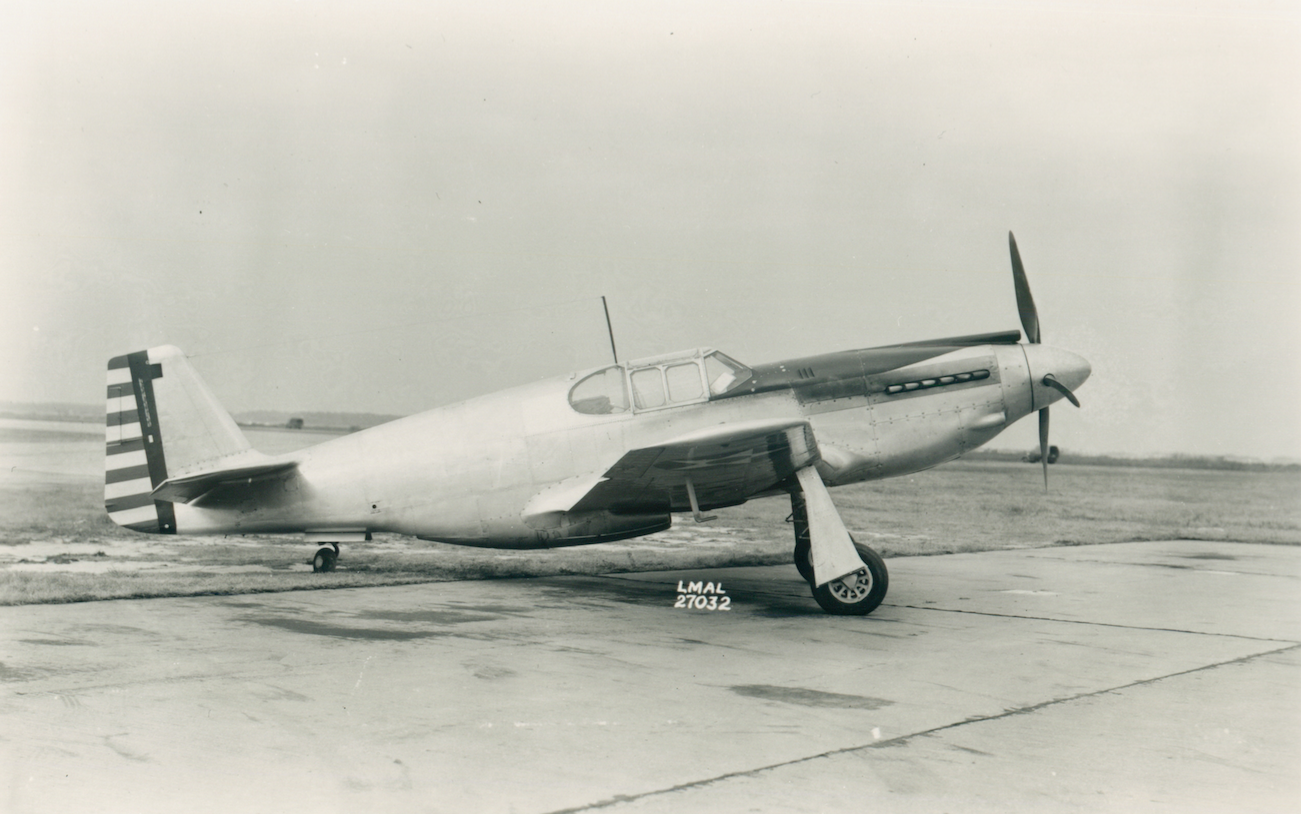

The V-1710-39 had a Normal Power rating of 880 horsepower at 2,600 r.p.m. at Sea Level; Take Off Power rating of 1,150 horsepower at 3,000 r.p.m. at Sea Level, with 44.5 inches of manifold pressure (1.51 Bar), 5 minute limit; and a War Emergency Power rating of 1,490 horsepower at 3,000 r.p.m., with 56 inches of manifold pressure (1.90 Bar). The V-1710-F3R was 3 feet, ¾ inches (0.934 meters) high, 2 feet, 5-9/32 inches (0.744 meters) wide and 7 feet, 1-5/8 inches (2.175 meters) long. It had a dry weight of 1,310 pounds (594 kilograms).
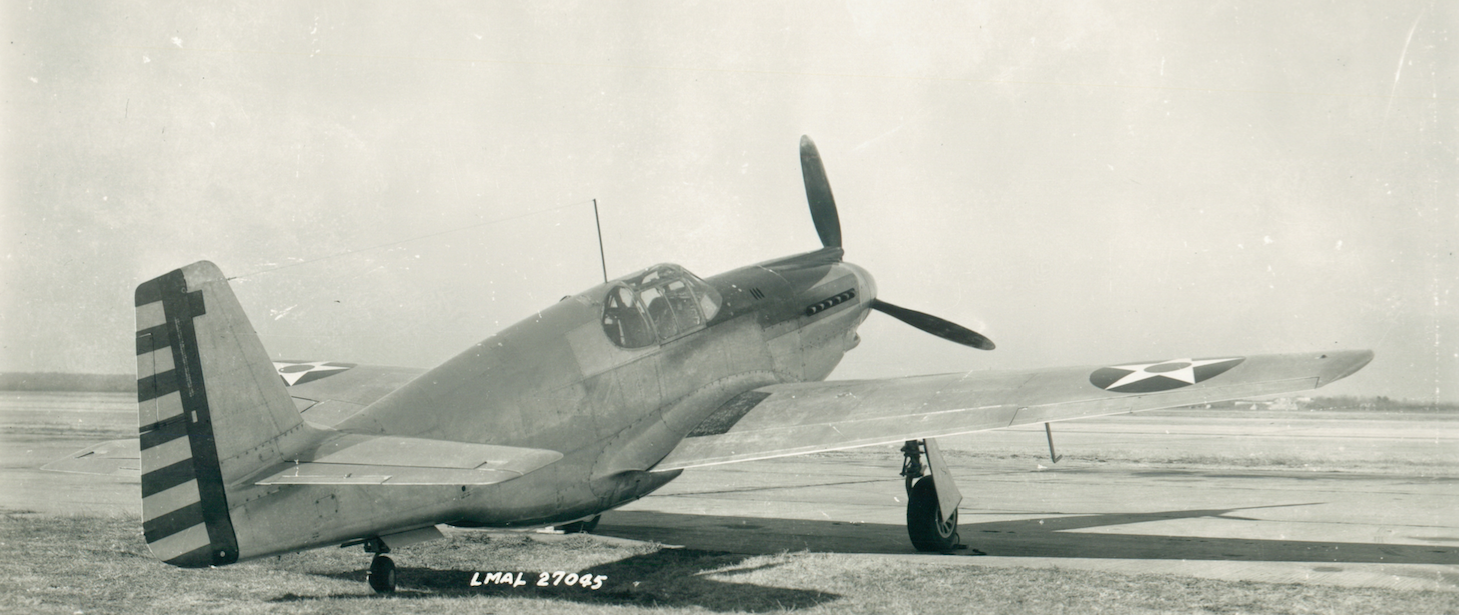
The XP-51 tested at Wright Field had a maximum speed of 382.0 miles per hour (614.8 kilometers per hour) at 13,000 feet (3,962 meters) at wide open throttle, and cruise speed of 300 miles per hour (483 kilometers per hour).
Below 20,000 feet (6,096 meters), the Mustang was the fastest fighter in the world. The Mk.I was 30 m.p.h. (48 kilometers per hour) faster than its contemporary, the Curtiss P-40 Warhawk, though both used exactly the same engine. Below 15,000 feet (4,572 meters), the Mustang was also 30–35 m.p.h (48–56 km/h) faster than a Supermarine Spitfire, which was equipped with the more powerful Roll-Royce Merlin V-12.
The service ceiling was 30,800 feet (9,388 meters) and range was 750 miles (1,207 kilometers).
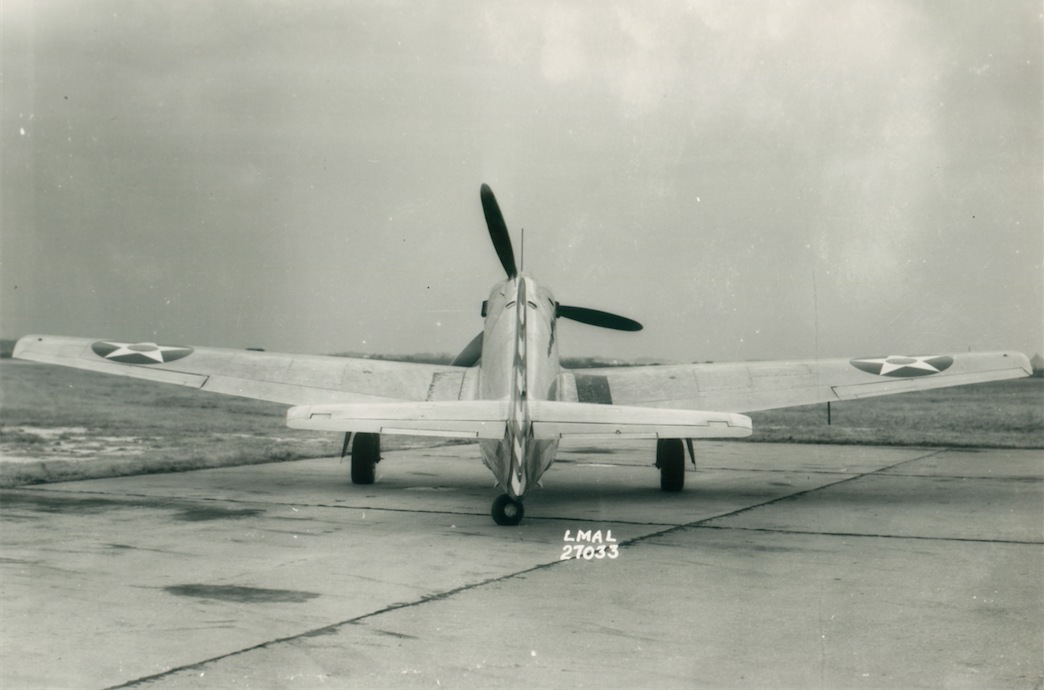
Armament consisted of two synchronized Browning AN-M2 .50-caliber machine guns mounted in the nose under the engine and firing through the propeller, and two more .50-caliber and four Browning .303 Mk.II machine guns in the wings.
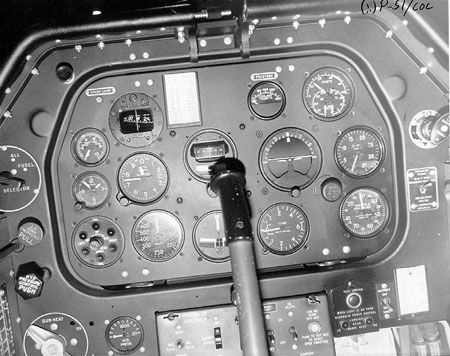
Two Mustang Mk.Is, AG348 and AG354, were taken from the first RAF production order and sent to Wright Field for testing by the U.S. Army Air Corps. These airplanes, assigned Air Corps serial numbers 41-038 and 41-039, were designated XP-51. They would be developed into the legendary P-51 Mustang. In production from 1941 to 1945, a total of 16,766 Mustangs of all variants were built.
North American XP-51 41-038 was transferred to the Smithsonian Institution National Air and Space Museum. It was restored in 1976. It is now in the collection of the EAA AirVenture Museum, Oshkosh, Wisconsin. It has a current FAA registration number, N51NA.

© 2018, Bryan R. Swopes
Several significant errors in the narrative:
1.) NA-73 41-038 was delivered in August, 41-039 was delivered in December.
2.) NA-73 41-038 was not AG348. AG 348 was #5. AG 345, 346, 347, XP-51, AG 348 was the production sequence. AG 348 was among the 1st 10 NA-73 without production run insertion of strengthened longerons found to be inadequate during XX73 static tests in December 1940. The first 10 NA-73 were so dsignated as ‘not suitable for combat’. AG348 was delivered to UK and later was given to USSR where it remained.
3.) NA-73 XP-51 went to Eglin for 20mm mount and ammo feed tests, tthen dispatched to Langley in March 1941 for extensive drag, dive, roll testing through June 1941.
4.) NA-73 XP-51 #2, delivered in December 1940, languished at Wright through April with few hours of flight. It went to Langley in late 1941 or early 1942 and probaby the article flown by the 55FS as well as Kelsey to compare performance. It served as a test bed for a variety of aerodynamic studies.
1.) The article discusses the XP-51s’ arrival at NACA Langley, not delivery to the Air Corps.
2.) “These airplanes had carried serial numbers AG348 and AG354, but were assigned USAAC serials 41-038 and 41-039.” —Building the P-51 Mustang, Michael O’Leary, Specialty Press, North Branch, MN, 2010, Appendix, Page 231
3.) And?
4.) And??
As Bill has indicated above, AG348 and AG354 were not 41-038 and 41-039 but separate airframes pulled from the NAA production line – O’Leary got it wrong. The NAA records and RAF records show that AG348 and AG354 were both delivered to the UK. Effectively NAA produced two additional aircraft in the initial production batch to meet the US Government requirement for the sale of the Mustang to the UK Government. It was these two extra aircraft that were delivered to become 41-038 and 41-039.
The armament as delivered and used in service by the RAF did not utilise the normal British specification 0.303in rimmed cartridge, but the US specification 0.300in cartridge. This is confirmed by Air Ministry and RAF documentation contained in the UK Archives. The RAF never converted the wing armament from the 0.300in Browning as it was considered that to do so would have required too great an effort to modify the ammunition feeds and case/link ejection arrangements. As well, the ‘mixed’ LMG and HMG armament on the Mustang had been considered by the RAF to be an interim armament solution for the initial batches of Mustangs they were planning to purchase. Their aim was for the 4 x 20mm Hispano cannon armament as provided on the NA-91 P-51 Mustang (Mustang Mk.IA in RAF service) which was proposed to be the future standardised armament for the type in RAF service. The 0.50in Browning HMGs and 0.300in Browning LMGs were provided as a part of the contracted purchase from NAA by the UK Government, and were shipped packed in a separate crate within the crate carrying the Mustang when it was shipped from the USA to the UK.
Source, please??? According to recognized serial number authority, Joe Baugher, MSN 73-3101 was originlly RAF AG348. It was assigned USAAC serial number 41-038. AG348 was then reallocated to MSN 73-3100.
NAA Records in the Archives now held by Boeing and the RAF Aircraft Record Cards held in the collection of the RAF Museum Hendon, plus various Air Ministry Files. Not everything Baugher has on the RAF Mustangs is 100% accurate as at time he originally compiled his lists not all the RAF records were declassified, plus some of the sources he used reflected what was known at the time. Declassifying of additional RAF and Air Ministry records (which is still ongoing under UK Archive rules) plus more recent research has revealed a number of errors in original records – some are simple transcription errors, some errors in original reporting and recording of aircraft arrivals, transfers and losses – cross correlation as well as access to additional sources of original records is identifying those errors and “filling in the gaps” in a number of instances.
Do you have access to these archival records?
Yes, and many, many years going through them. I have TBs of digital and cubic yards of hard copy copies. Plus interaction with a network of other dedicated researchers and historians across the globe whose primary focus is on the P-51 Mustang; many years corresponding, interviewing, questioning RAF and Commonwealth aircrew and groundcrew who operated the early Allison Mustangs in RAF and Commonwealth Air Force Service.
May I suggest that you have a look at one of the latest and in-depth studies published on the history and development of the Mustang in recent years which took advantage of material in various archives and collections that had not been previously open or accessed by researchers. “P-51B Mustang: North American’s Bastard Stepchild That Saved the 8th Air Force” by William Marshall, Lowell Ford (no relation) with Foreword by Col (Ret) Robert W Gruenhagen, published 2020.
Thank you, Mr. Ford. I will try to obtain a copy.
Ordered a copy from AbeBooks. Thanks for the recommendation.
Joe Baugher succumbed to cancer in November 2023. His valuable website is infested with fishing malware, now. Hopefully, this resource can be saved.
Sad news. I have found a lot of valuable information there.